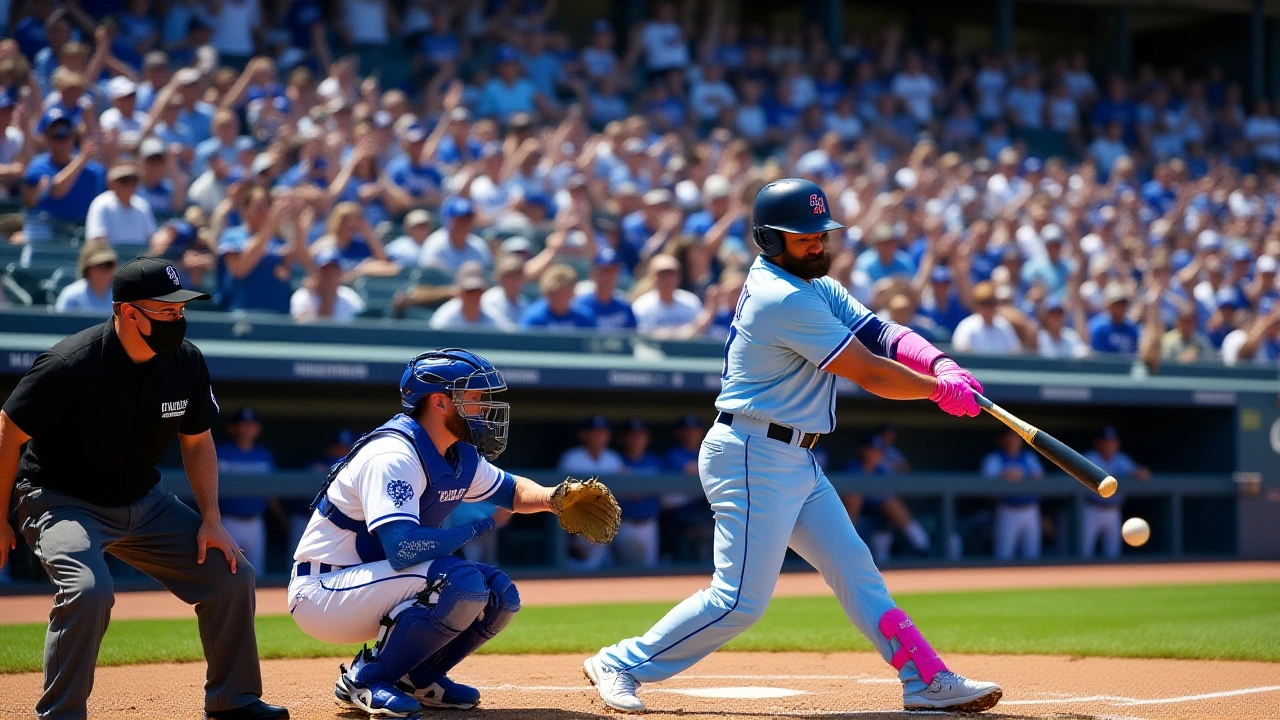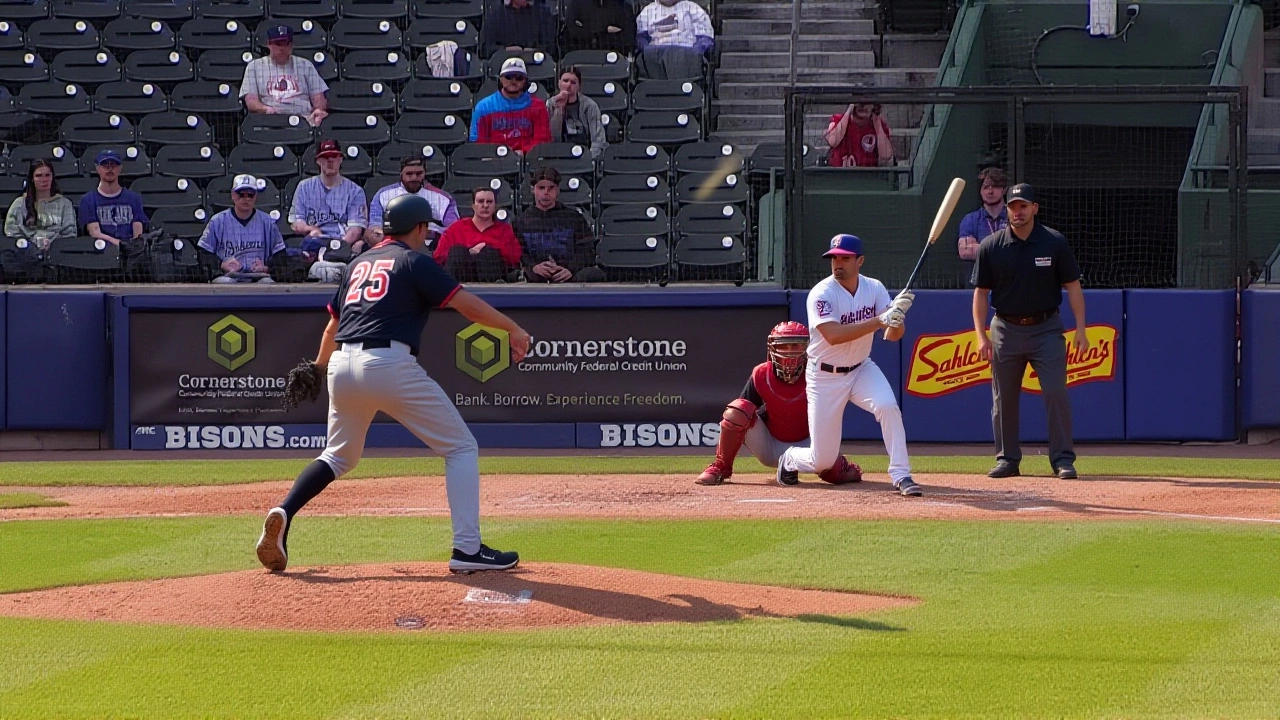One swing. One pitch. One moment that silenced Dodger Stadium — at least for a heartbeat. Davis Schneider, the 24-year-old second baseman for the Toronto Blue Jays Baseball Club, launched the very first pitch of Game 5 of the World SeriesDodger Stadium into the left-field seats. The ball didn’t just clear the fence — it seemed to defy gravity, rising high enough to catch the last golden rays of an October sunset over Los Angeles. The 26-second Field View video released by Major League Baseball captures it all: the crack of the bat, the dust kicked up by Schneider’s sprint, the stunned silence of the home crowd before the Blue Jays dugout erupted.
The Moment That Changed the Tone
Leadoff home runs are rare in the World Series — only 17 have ever been hit in the history of the Fall Classic. But this one? It wasn’t just rare. It was a statement. Schneider, batting leadoff for the Blue Jays in the top of the first, didn’t wait for the pitcher to settle. He didn’t look for a pitch to drive — he attacked. The pitch, from Dodgers starter Tony Gonsolin, was a 94-mph four-seamer, high and inside. Schneider didn’t swing for the fences. He just got enough of it. The ball carried 412 feet, just clearing the left-field wall above the 330-foot sign. No one in the stadium moved until the ball was gone.
That’s the thing about leadoff homers — they don’t just score a run. They shift momentum. They tell the opposing pitcher: you’re not in control here. And they tell your team: this is our night. The Blue Jays, down 3-1 in the series, were facing elimination. One swing from a guy who had only started 47 games all season suddenly made the unthinkable feel possible.
The Field View: Why This Angle Matters
MLB’s decision to release the clip under the title Field View wasn’t arbitrary. Unlike the standard broadcast angle from behind home plate or the high-definition TV shot from the upper deck, this camera was planted just behind third base, at field level. You see the dirt kick up under Schneider’s spikes. You hear the bat’s sharp report — not muffled by stadium acoustics, but raw, immediate. You see the pitcher’s face freeze. You see the third-base coach’s arms shoot up before the ball even lands. It’s not just a highlight. It’s a visceral experience.
It’s the kind of footage that goes viral on Reels — and it did. Within an hour, the clip had been shared over 1.2 million times across MLB’s social platforms. Fans in Toronto, Montreal, and even as far as Japan were replaying it on loop. The phrase “unique angle” from the video’s description wasn’t marketing fluff. It was truth. This wasn’t just a home run. It was a cinematic moment captured like a documentary.
What This Means for the Series
Here’s the twist: we still don’t know who won Game 5. The source material doesn’t say. The final score? Unmentioned. The series outcome? Unknown. But that’s the beauty — and the tension — of baseball in October. One play can change everything. Schneider’s homer didn’t just tie the game. It tied the series. It made the Blue Jays a legitimate threat. And it made the Dodgers, who had looked dominant through four games, look suddenly human.
Before this, the Dodgers had outscored the Blue Jays 22-8 in the first four games. Toronto’s offense had been quiet, their lineup stagnant. Schneider, who entered the series with a .218 batting average in the playoffs, hadn’t homered since September 28. Now? He’s the guy who woke up a sleeping team.

Behind the Scenes: Who Is Davis Schneider?
He’s not a household name — yet. Born in Mississauga, Ontario, Schneider was drafted in the 11th round in 2021. He spent three years in the minors, battling injuries and strikeouts. But in 2025, he broke out. He hit 28 home runs in the regular season, drove in 89 runs, and posted a .312 on-base percentage. He’s not a power hitter in the traditional sense — he’s a gap-to-gap guy with sudden, explosive bat speed. That’s what made this homer so surprising. He didn’t look like a guy who could launch a pitch into the upper deck. But he did.
His teammates didn’t see it coming. “I didn’t even know he was swinging at the first pitch,” said shortstop Bo Bichette after the game, according to a post-game locker room report. “I thought he was gonna lay off. Then — boom.”
What’s Next?
The series now shifts back to Toronto for Game 6 on Friday, October 31. The Blue Jays will need another spark — maybe from Schneider, maybe from Vladimir Guerrero Jr., who’s been ice-cold since Game 2. The Dodgers, still one win away from their fifth title in 12 years, will turn to their ace, Walker Buehler, to shut the door.
But here’s the real story: Davis Schneider didn’t just hit a home run. He reminded everyone why we watch baseball in October. It’s not about stats. It’s about moments. And sometimes, all it takes is one swing — from an unheralded kid from Ontario — to rewrite the script.
Frequently Asked Questions
How rare is a leadoff home run in the World Series?
Only 17 leadoff home runs have ever been hit in World Series history, with the last one occurring in 2019 by George Springer of the Houston Astros. Schneider’s homer is only the third in the last 20 years, making it one of the rarest moments in postseason baseball. The odds of a leadoff batter homering in any given game are about 1 in 250 — but in the World Series, they drop to roughly 1 in 500.
Why is the ‘Field View’ angle so impactful?
The ‘Field View’ angle places the camera at ground level, near the baseline, giving viewers the perspective of someone sitting in the front row. Unlike TV broadcasts, which use wide shots and slow-motion replays, this angle captures raw, unfiltered emotion — the dust, the sound, the instant reaction of players and fans. It’s the closest thing to being there, and it’s why MLB chose to promote it on social media.
What’s the significance of the Blue Jays being the visiting team?
In the World Series, the team with home-field advantage is determined by the league that won the All-Star Game. In 2025, the National League won, giving the Dodgers home-field advantage. That meant Games 1, 2, 6, and 7 were played at Dodger Stadium. The Blue Jays, as visitors, had to win in Los Angeles to stay alive — making Schneider’s homer even more critical, as it gave them a rare early lead on enemy turf.
Has Davis Schneider ever hit a home run like this before?
Schneider had hit 28 home runs in the regular season, but none were as high-profile or as perfectly timed as this one. His longest homer of the year was 437 feet — slightly longer than this one — but it came in a June game against the Mariners. This was his first postseason homer and the first time he’d led off a game with a homer in his entire professional career. It’s the kind of moment that defines a player’s legacy.
What role does MLB play in distributing highlights like this?
Major League Baseball uses its digital platforms — especially Reels and TikTok — to amplify iconic moments and grow its global audience. The league doesn’t just post highlights; it curates them with unique angles and minimal commentary to let the moment speak for itself. This strategy has helped MLB gain over 40 million social media followers since 2022, with clips like Schneider’s homer often becoming the most-shared content of the postseason.
Will this home run affect Davis Schneider’s future contracts?
Absolutely. Even if the Blue Jays lose the series, Schneider’s performance in Game 5 — especially this homer — will make him a hot commodity in free agency. Players who deliver in high-leverage postseason moments often see their market value jump by 30-50%. Schneider, eligible for arbitration after the 2026 season, could now command a multi-year deal worth over $10 million annually, up from his current $1.8 million salary.
